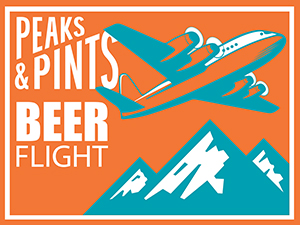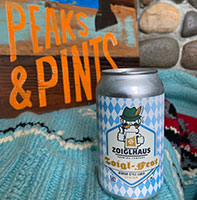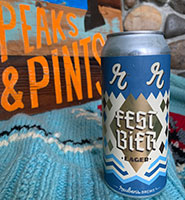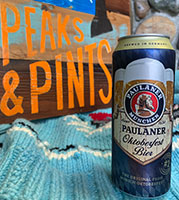 Even with the barest first hint of autumn in the air, richer brews have begun flooding the market. Unlike white shoes before Easter, it’s perfectly acceptable to enjoy an Oktoberfest before October. What is an Oktoberfest? Great question, as it has changed. Oktoberfests are also commonly known as Märzens. Before the advent of the refrigerator, it was near impossible to brew beer in the summer. Yeast aren’t big fans of heat, and the sweltering temperatures during summer months increased the risk of bacterial infections and often ruined beer during the important fermentation period. So, most were brewed in March (hence the name Märzen), were stored in cold caves or cellars during the warm summer months and popped open once fall rolled around. Most Oktoberfests are colored a deep auburn, with a light hoppiness and flavors that start caramel-sweet and end dry and nutty. This style use to be the only served at Germany’s Oktoberfest, the world’s biggest celebration of beer. Festbier, sometimes called wiesn, festibiere or Oktoberfestbier — a name that can only be used by Breweries in Munich — has taken the place of Marzën in the beer tents dotting the Theresienwiese (Therese’s meadow) in Munich during the two-week Oktoberfest celebration. Golden in color and very easy to drink festbier was developed and pioneered by Paulaner. The brewery debuted it during the festival in the early 1970s. Today, Peaks & Pints presents a to-go flight of festbier — a flight we’re calling Peaks and Pints Pilot Program: Festbier Flight.
Even with the barest first hint of autumn in the air, richer brews have begun flooding the market. Unlike white shoes before Easter, it’s perfectly acceptable to enjoy an Oktoberfest before October. What is an Oktoberfest? Great question, as it has changed. Oktoberfests are also commonly known as Märzens. Before the advent of the refrigerator, it was near impossible to brew beer in the summer. Yeast aren’t big fans of heat, and the sweltering temperatures during summer months increased the risk of bacterial infections and often ruined beer during the important fermentation period. So, most were brewed in March (hence the name Märzen), were stored in cold caves or cellars during the warm summer months and popped open once fall rolled around. Most Oktoberfests are colored a deep auburn, with a light hoppiness and flavors that start caramel-sweet and end dry and nutty. This style use to be the only served at Germany’s Oktoberfest, the world’s biggest celebration of beer. Festbier, sometimes called wiesn, festibiere or Oktoberfestbier — a name that can only be used by Breweries in Munich — has taken the place of Marzën in the beer tents dotting the Theresienwiese (Therese’s meadow) in Munich during the two-week Oktoberfest celebration. Golden in color and very easy to drink festbier was developed and pioneered by Paulaner. The brewery debuted it during the festival in the early 1970s. Today, Peaks & Pints presents a to-go flight of festbier — a flight we’re calling Peaks and Pints Pilot Program: Festbier Flight.
 Peaks and Pints Pilot Program: Festbier Flight
Peaks and Pints Pilot Program: Festbier Flight
Zoiglhaus Zoigl-Fest
5.5% ABV
Why do people in the know go on about German beer? The secret of Teutonic zymurgy is balance. The standard four elements of beer — hops, barley, malt, and water — are kept in careful proportion. That principle is in play in Zoiglhaus’ take on festbier. Zoigl-Fest offers a deep orange color from the Munich malts, light spiciness from the German noble hops, and a clean drinkability from the German Lager yeast.
 Dru Bru Festbier
Dru Bru Festbier
5.6% ABV, 28 IBU
Enjoying this toasty, session ale with heaps of Vienna malt and German noble hops at Peaks and Pints is much better than on Dru Bru’s picturesque patio picnic table bench next to chairlifts on Snoqualmie Summit. Yeah, right. Anyway, this German-style rich golden lager offers layers of German malt, and a charge of soft-edged hops impart flavors of bread-dough and a subtle aroma of herbs and spices. You’ll find this creamy textured beer was born for the season of steins.
 Reuben’s Festbier
Reuben’s Festbier
5.8% ABV
Only beer conforming to the Reinheitsgebot and brewed within the Munich city limits can be served at Oktoberfest. Beers meeting these criteria are designated “Oktoberfest Bier” although the name also denotes two distinct beer styles: the traditional Märzen style lager and a paler “Festbier” that’s more commonly served at Oktoberfest today. Less malty and more drinkable than Marzën, Reuben’s Brews’ festbier is based on the beer now served at the Oktoberfest celebrations in Munich. Expect layers of biscuity malt and bright orange zest wrapped around a distinct hop punch.
 Paulaner Oktoberfest Bier
Paulaner Oktoberfest Bier
6% ABV
The Paulaner brewery is one of the largest breweries in Munich, Bavaria in Germany and is part of the Paulaner Brewery Group, which includes Hacker-Pschorr, Auer Bräu, Hopf and Thurn, and Taxis. Founded in 1634, Paulaner is one of the six brands allowed to be served at the world-famous Oktoberfest. Brewed once a year, and only available while supplies last, Oktoberfest Wiesn is the first festbier to be poured at Oktoberfest in Munich. It’s deep golden color, full-bodied and wonderfully mellow, with a balanced harmonious taste and the pleasant fragrance of hops.
LINK: Peaks & Pints cooler inventory
